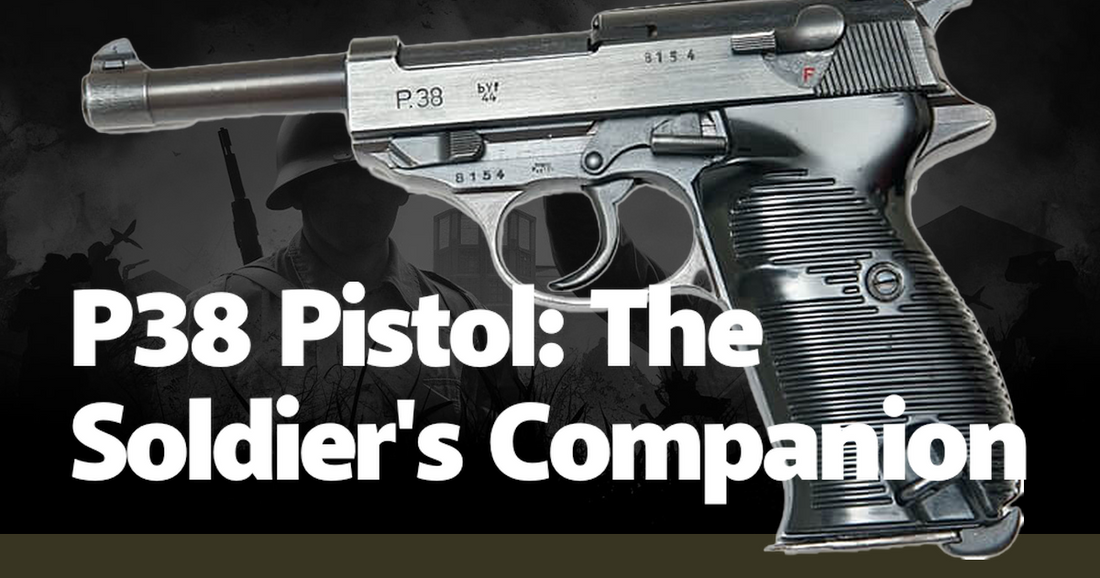The P38 pistol, a hallmark of German engineering and ingenuity, has earned its place in the annals of military history as a reliable and robust sidearm. Introduced during World War II, the P38 was designed to replace the aging Luger P08, which, despite its iconic status, was complex and expensive to produce. The P38, with its streamlined production process and innovative features, quickly became a favorite among soldiers. Its design incorporated a double-action trigger, a first for a military pistol, allowing soldiers to fire the first shot without manually cocking the hammer. This feature provided a crucial advantage in the heat of battle, where split-second decisions could mean the difference between life and death.
One of the most compelling aspects of the P38 was its widespread use across various theaters of war. From the frozen expanses of the Eastern Front to the sun-scorched deserts of North Africa, the P38 proved its mettle under diverse and often harsh conditions. Anecdotes from soldiers who wielded the P38 paint a vivid picture of its reliability. One such story comes from a German officer stationed in Stalingrad, who recounted how his P38 continued to function flawlessly despite being caked in mud and ice. This level of dependability fostered a sense of trust and confidence among its users, cementing the P38's reputation as a soldier's companion.
The P38's construction was a marvel of practicality and efficiency. Unlike the Luger, which required precise machining and hand-fitting, the P38 was designed for mass production. Its parts were stamped and welded, allowing for quicker and more economical assembly. This shift in manufacturing philosophy was crucial as the war dragged on and resources became scarcer. The P38's simplified design did not compromise its performance; rather, it enhanced its durability. Soldiers appreciated the pistol's ease of maintenance, which was a significant factor in its widespread adoption and continued use throughout the war.
In addition to its mechanical reliability, the P38 boasted impressive accuracy. Its fixed barrel design contributed to its precision, making it a formidable weapon in the hands of a skilled marksman. During the Battle of the Bulge, American soldiers who captured P38s from German troops often chose to use them over their standard-issue sidearms. This preference was not merely a matter of convenience but a testament to the P38's superior performance. The pistol's 9mm Parabellum cartridge provided a good balance of stopping power and manageable recoil, further enhancing its effectiveness in combat situations.
The P38's influence extended beyond the German military. After the war, the pistol found new life in the arsenals of various countries. The French and Norwegian armed forces, among others, adopted the P38, recognizing its value as a reliable sidearm. Its design also influenced future generations of pistols, including the renowned Beretta 92, which bears a striking resemblance to the P38. This legacy underscores the impact of the P38 on modern firearms development, illustrating how a well-designed weapon can transcend its original context and continue to serve military and law enforcement agencies worldwide.
Personal accounts from soldiers who carried the P38 highlight the emotional connection they developed with their sidearm. For many, the pistol was more than just a tool; it was a symbol of their survival and resilience. One veteran recalled how his P38 saved his life during a close-quarter skirmish in Italy, where the quick draw and reliable action of the pistol allowed him to fend off an enemy ambush. Such stories are a testament to the P38's role not just as a weapon, but as a trusted companion in the most dire of circumstances.
The P38's enduring legacy is also evident in its continued use by collectors and enthusiasts. Military historians and firearm aficionados alike prize the P38 for its historical significance and mechanical excellence. Restoring and preserving these pistols has become a passion for many, ensuring that the stories and experiences of those who used them are not forgotten. The P38 serves as a tangible link to the past, a reminder of the ingenuity and resilience that characterized the soldiers who carried it.
In conclusion, the P38 pistol stands as a remarkable example of wartime innovation and practicality. Its design, reliability, and performance made it a beloved sidearm for soldiers during World War II and beyond. The P38's influence on subsequent firearm designs and its continued reverence among collectors underscore its lasting impact. As we reflect on the history of this iconic pistol, we are reminded of the countless soldiers for whom the P38 was more than just a weapon—it was a steadfast companion in the crucible of war.

